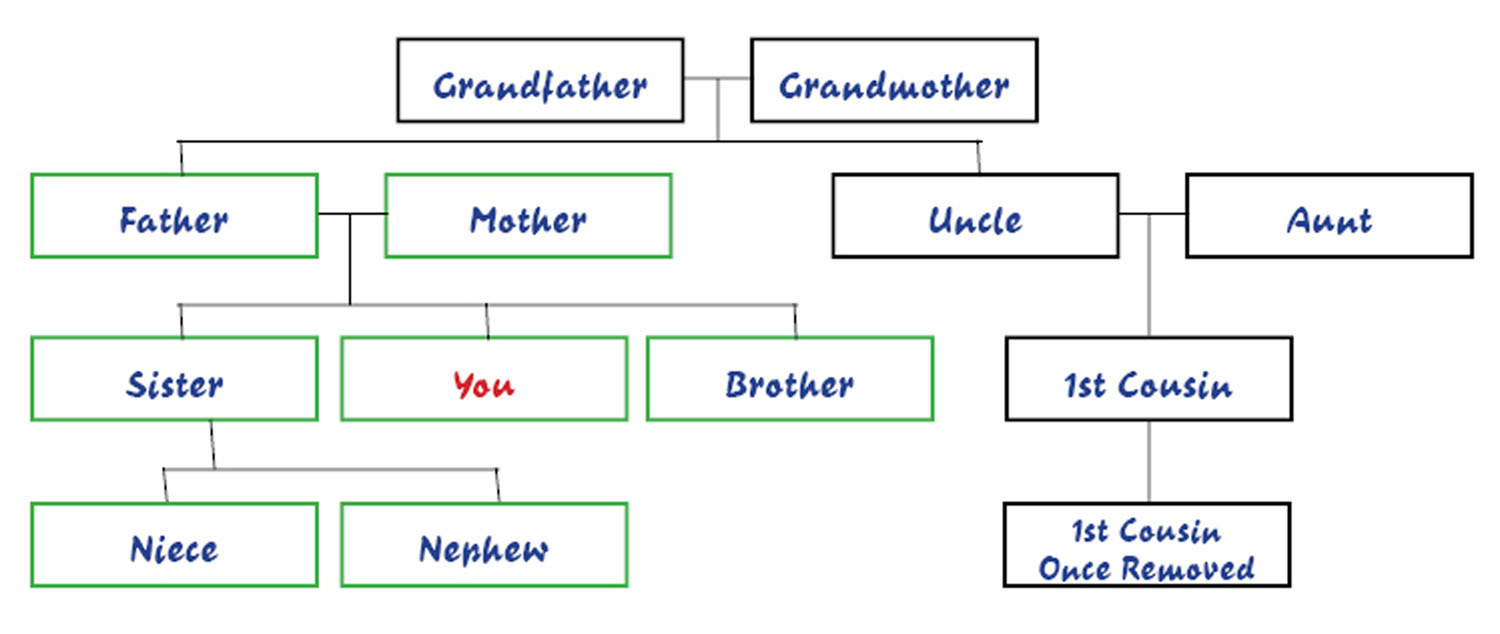
Quick–if your grandfather’s sister’s son has a grandson … what relation is he to you? To your grandfather?
Raise your hands if you’ve ever been confused when someone referred to your “first cousin once removed on your mother’s side.”
I thought so.
So–let’s clarify this shall we?
The basics are simple–grandparents, aunts, uncles, parents, siblings, cousins. You probably don’t really need help with these, but we’ll go over it anyway.
 When two people meet and fall in love, they get married and have children. These tiny people are then known to them as their Sons and Daughters, and when they grow up enough to talk, they will call the people who created them Mother and Father (or, collectively, their Parents).
When two people meet and fall in love, they get married and have children. These tiny people are then known to them as their Sons and Daughters, and when they grow up enough to talk, they will call the people who created them Mother and Father (or, collectively, their Parents).
As time goes by, the children grow up and then they meet other people, fall in love, and have children of their own. These children, being a further generation away, will call the original couple Grandparents, and will be known to them as Grandchildren. (Because, of course, everybody knows that the “grands” are so much more wonderful than the “regular” parents and children–probably because you don’t usually live with them.)
This new generation of children will call each other Cousin. That is, the children of siblings are First Cousins. And they will refer to their parents’ siblings as Aunt and Uncle.
All this is pretty straight-forward, right? Unless they were adopted, most people grew up with at least one of these close relatives, even if you only saw them on major holidays.
It’s when you start adding in further generations that it starts getting complicated.
When your siblings have children, they become your Niece and Nephew, and you become an Aunt or Uncle. This is the exact relationship you had with your own parents’ brothers and sisters, so it’s not unduly complicated, just from the opposite “side” than you grew up with. And when your niece or nephew has kids, they–since they will be one generation further along–become your Grandniece and Grandnephew.
Your first cousins, though–when they have children, they do not become your “grandcousins” because there is no such thing. What they are are your First Cousins Once Removed, and they will be Second Cousin to your kids and to your siblings’ kids.
Yeah, see, I told you this was where it started getting sticky.
Which is exactly why we’re going to continue this next week … this is much too long for one post!

This was very interesting and I look forward to the next one. I will mark this with my geneology stuff too.
It just seemed like a useful thing to write about! I was so pleased with myself when I finally got all of this straight, finally, about 10 years ago–after a lifetime of confusion. I wanted to share!
Fantastic! Now I have one for you: isn’t it proper to have Hank Sr. and Hank Jr., but not Hank I and Hank II until Hank III is born?
SmallWorld Reads’s last blog post..The Sunday Salon: British Lit or World Lit?
As I understand it, Senior/Junior apply to parents and children–but if you named your son for his grandfather, you’d have a I and II. If three generations in a row get the exact same name, I think it goes Senior-Junior until III is born, after which it’s I, II, III … although I’m not positive about that.
My head started hurting when I first started reading but by the end it all made sense. Of course, this covered the relations I’m already familiar with 🙂 I’m a sometimes-genealogy-hobbyist so this stuff is good to know and fascinating!
Melissa Donovan’s last blog post..Hot off the Press!
Hmm, I know I left a comment here yesterday but now I don’t see it. I think the comment monster must have stopped by and ate it!
Melissa Donovan’s last blog post..Hot off the Press!
Well, next week it gets a little more complicated. Hopefully the illustrations help … heaven knows they look better than the hand-written ones I tried first!
Hey, I think I’ve got it ! Just have to remember it.
Mom’s last blog post..20th Anniversary …
Pingback: Punctuality Rules! » Blog Archive » MM: Six Degrees of Separation–Once Removed